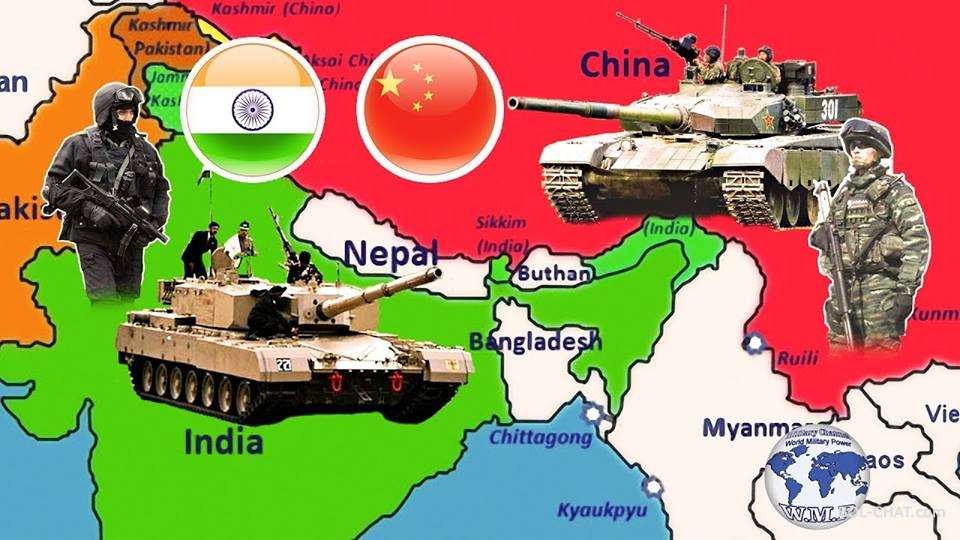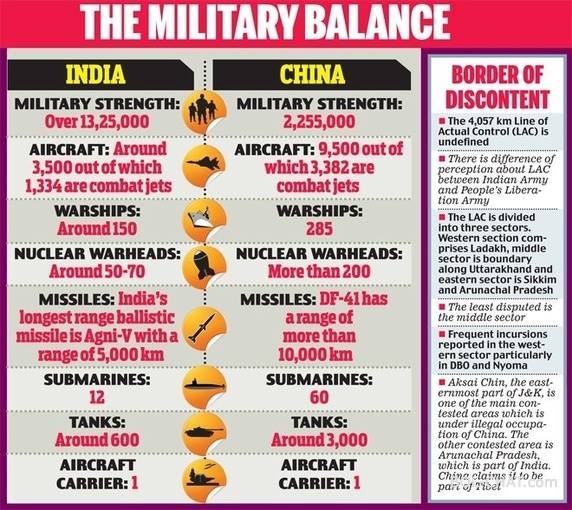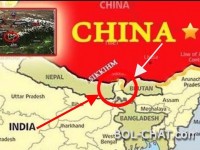The collision of giants
At the beginning of the month, China said it would announce the war to India if India did not withdraw its army from the Chinese Plateau Dokl. It all started on June 6, when Chinese military engineers entered the disputed area of Dokalam and began building the road to Bhutan. This was triggered by a protest by India, whose army was involved (India has signed a Bhutan-bound border ban) and has pushed a part of the Chinese. However, Beijing has sent reinforcements to this area.
Delhi is afraid that by downloading Dokals, the narrow belt of Siliguri, better known as the "chicken neck" (in some parts it is only 30 kilometers wide), which connects more Indian states with the center, could be called into question. Both accusations and mutual threats are heard on one side and on the other. At the same time, in the north of Tibet, China, as a demonstration of force, carried out military exercises for the rapid deployment of the army and counter-attack.
India also decided to show their teeth by participating in military exercises with Japan and the United States in the Bengal Gulf in mid-July. China is not afraid to go back to war (the last war between the two countries was held in 1962), nor is it trying to avoid a military conflict with India. On the other hand, India believes China has quietly pushed India out of its strategic interest zone in South Asia over the last six years.
India believes China is influencing Sri Lanka and Nepal. In Pakistan, Beijing owns a base, and recently Chinese soldiers have deployed in Djibouti. Also, China has good relations with Myanmar (former Burma) and Cambodia. China considers the controversial entire 900-kilometer border with India, established in 1914 with the "help" of the rude British, and the stay of the Tibetan spiritual leader of the Dalai Lama in India does not help solve the problem.
The military power of both countries is growing steadily, and both armies are modernizing themselves. China's military budget for this year is $ 140 billion, and India is $ 50 billion. With nuclear weapons, both countries have hundreds of warheads. Another problem is Pakistan, another nuclear power, which could be drawn into conflict with India, as it has territorial disputes with India.
In this case, and the worst possible scenario, it would be a war involving at least a third of the world's population. India and China - the two most powerful countries in the world that record the fastest economic growth - have been fighting for hegemony in Asia for centuries. In 1962, a war broke out between China and India, the cause of which was a territorial dispute that dated from the 19th century. After a series of seams and border incidents, a war broke out which ended with a heavy Indian defeat and a Chinese takeover of control over the entire controversial territory. However, due to the Cuban missile crisis, the Indian-Chinese war did not cause much attention to the world public.


- 16 Aug, 2017
- 2060 views
- No comments


